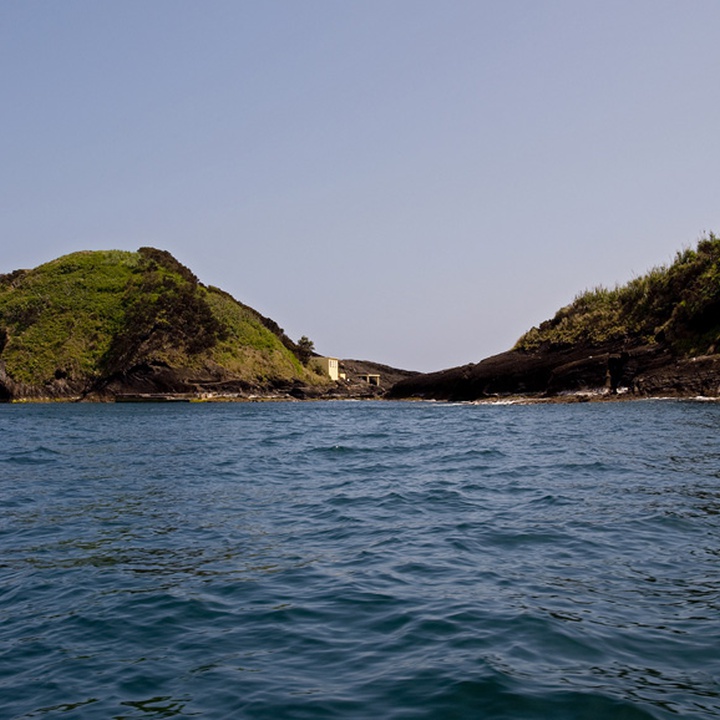Text size:
Caloura - Ilhéu de Vila Franca do Campo
Protected Area of Resources Management
With 1349 hectares, this area surrounds the Ilhéu de Vila Franca do Campo Protected Area for the Management of Habitats or Species.
The lava delta of Caloura results of the extracted basaltic lavas from Monte Santo and other volcanic cones in the surrounding areas. The entire length of the protected area consists of inlets and shallow bays, with rocky, sediment or mixed marine substrata.
On the ocean floor, there are several submerged and semi-submerged sea caves, such as the Panela da Ponta da Galera, a vertical cave in the shape of a "pot", which comes down to about 18 metres deep and Arcos da Caloura, formed by small arches and a large cave, but with little height.
In Baixa da Areia zone, the bottom has large sand-covered areas and numerous caves often used for diving. In Ponta da Água de Pau, the rocky bottoms are predominantly formed by slabs.
These caves are authentic shelters for some fish species such as the Moray Eel (Muraena augusti), the Mediterranean Moray (Muraena helena), the Dusky Grouper (Epinephelus marginatus) and the Common Octopus (Octopus vulgaris).
In Cerco area, there are small isolated boulders where nests a mixed colony of Common Terns (Sterna hirundo) and Roseate Tern (Sterna dougallii). This coastal area is frequented by the Loggerhead Turtle (Caretta caretta) and the Common Bottlenose Dolphin (Tursiops truncates), species listed in the Habitats Directive to ensure their conservation.
In terms of flora, there is the Azorean Heather (Erica azorica), the Spergularia azorica, the Azorean Wild Carrot (Daucus carota subsp. azoricus), the Azorean Coastal Fescue (Festuca petraea), the Sea Fennel (Crithmum maritimum), the Sharp-pointed Rush (Juncus acutus), the Buck's-horn Plantain (Plantago coronopus) and the Mediterranean Sea Lavender (Limonium vulgare).
This zone also includes areas of special environmental interest of the terrestrial and marine coastline between the parishes of Água de Pau and São Miguel, such as the Caloura – Ponta da Galera Special Area of Conservation (SAC), within the Natura 2020 network, and Integral Reserve Zone of Limpets Capture. Due to its unique characteristics, the Caloura’s lava delta and fossil cliff are also a geosite of the Azores UNESCO Global Geopark.




